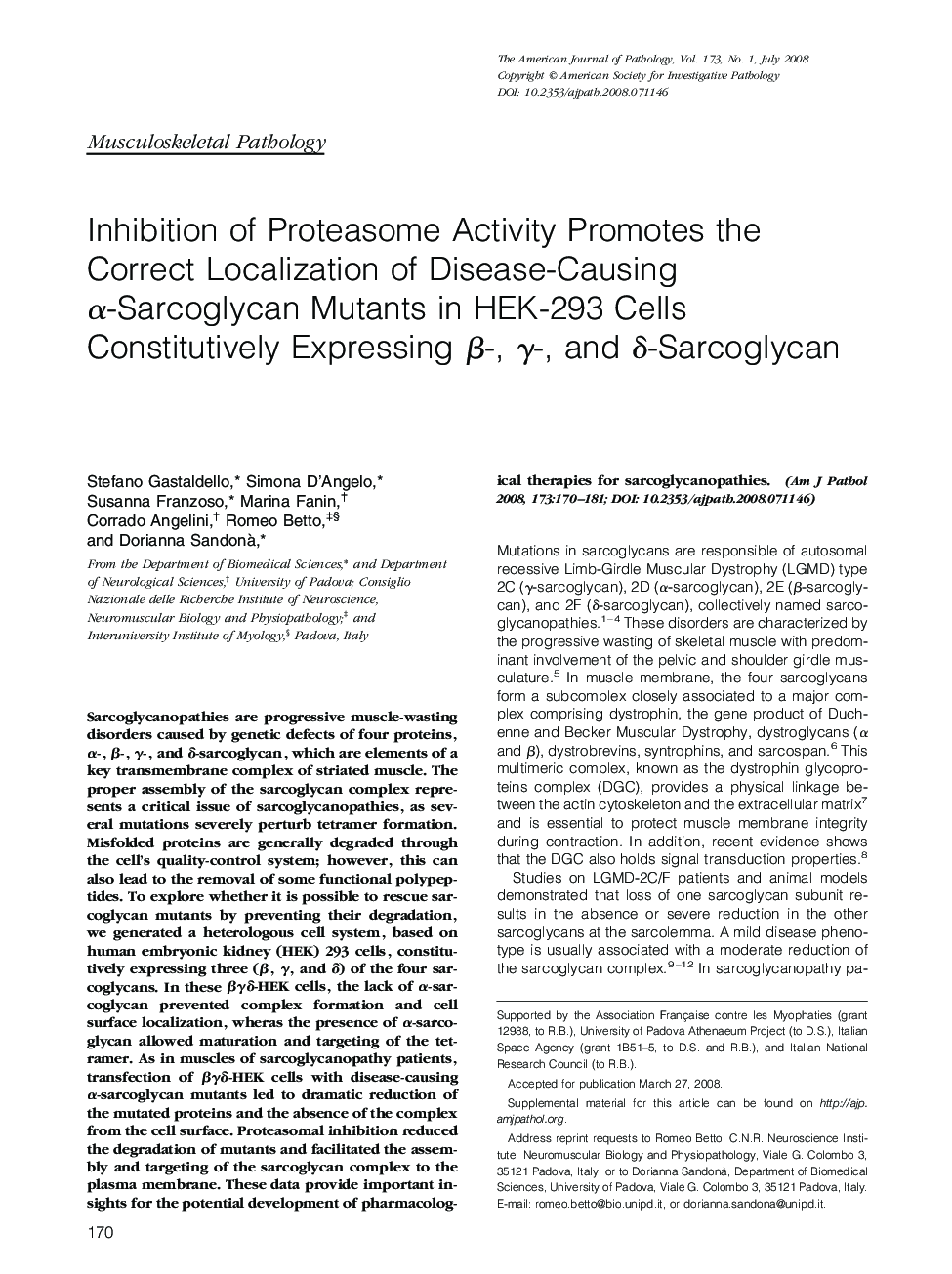| Article ID | Journal | Published Year | Pages | File Type |
|---|---|---|---|---|
| 5939170 | The American Journal of Pathology | 2008 | 12 Pages |
Sarcoglycanopathies are progressive muscle-wasting disorders caused by genetic defects of four proteins, α-, β-, γ-, and δ-sarcoglycan, which are elements of a key transmembrane complex of striated muscle. The proper assembly of the sarcoglycan complex represents a critical issue of sarcoglycanopathies, as several mutations severely perturb tetramer formation. Misfolded proteins are generally degraded through the cell's quality-control system; however, this can also lead to the removal of some functional polypeptides. To explore whether it is possible to rescue sarcoglycan mutants by preventing their degradation, we generated a heterologous cell system, based on human embryonic kidney (HEK) 293 cells, constitutively expressing three (β, γ, and δ) of the four sarcoglycans. In these βγδ-HEK cells, the lack of α-sarcoglycan prevented complex formation and cell surface localization, wheras the presence of α-sarcoglycan allowed maturation and targeting of the tetramer. As in muscles of sarcoglycanopathy patients, transfection of βγδ-HEK cells with disease-causing α-sarcoglycan mutants led to dramatic reduction of the mutated proteins and the absence of the complex from the cell surface. Proteasomal inhibition reduced the degradation of mutants and facilitated the assembly and targeting of the sarcoglycan complex to the plasma membrane. These data provide important insights for the potential development of pharmacological therapies for sarcoglycanopathies.
